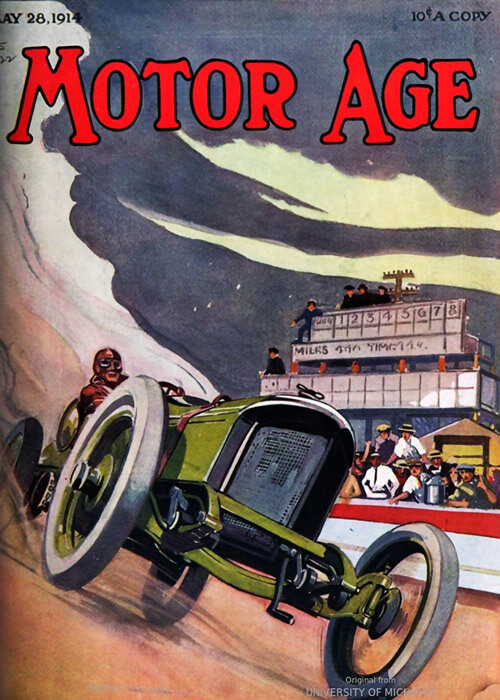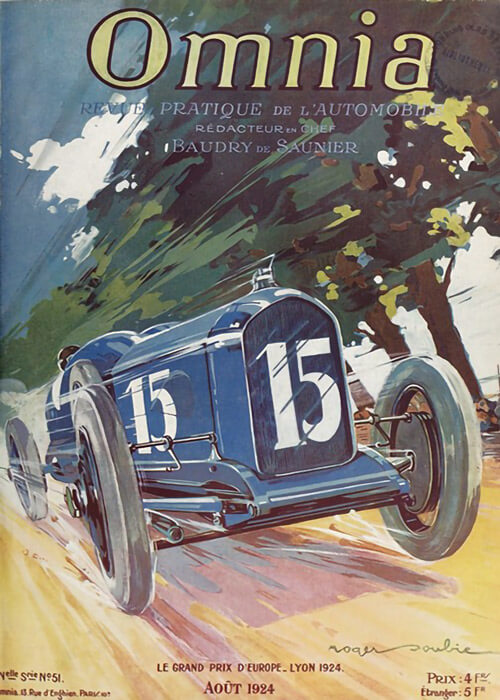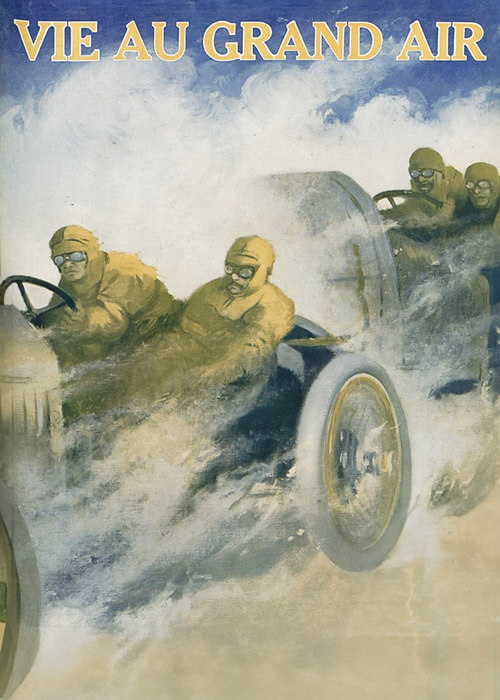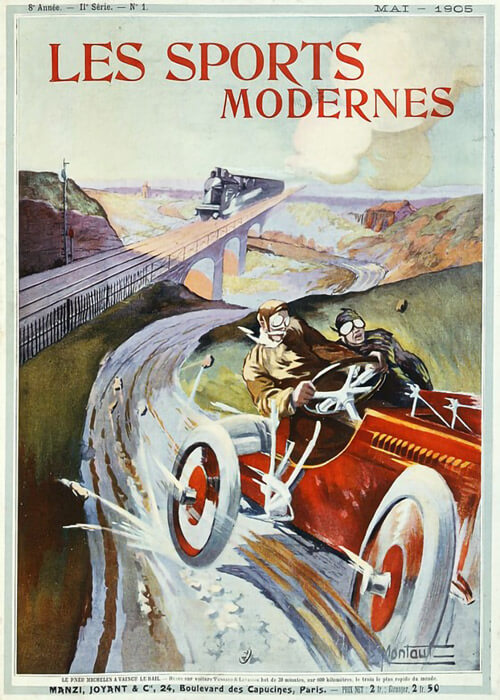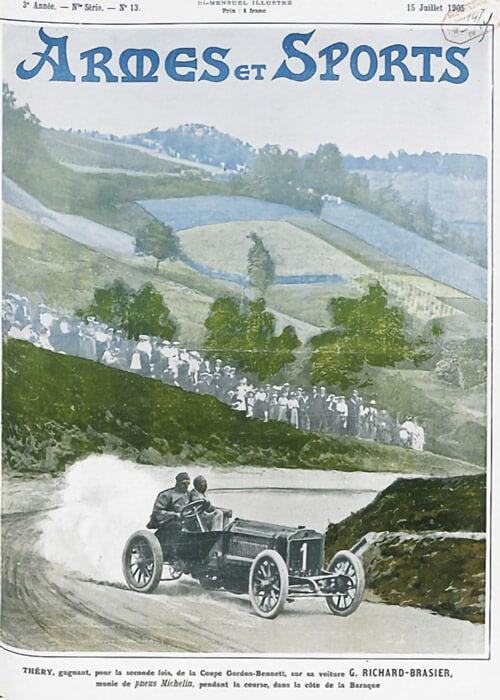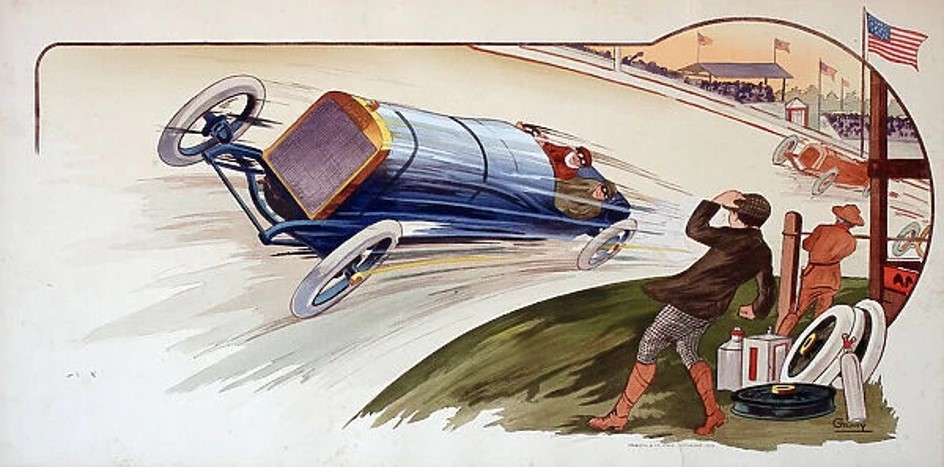It is begin July and construction on the Indianapolis Motor Speedway is gradually coming inro its last phase. At the same time, a similar speedway is under construction in Atlanta, way south in Georgia. This one is projected later that Indiana’s and it is scheduled about three months later. Surprisingly, the picture of the Indianapolis Speedway shown here is the second design and still not as she finally would become.
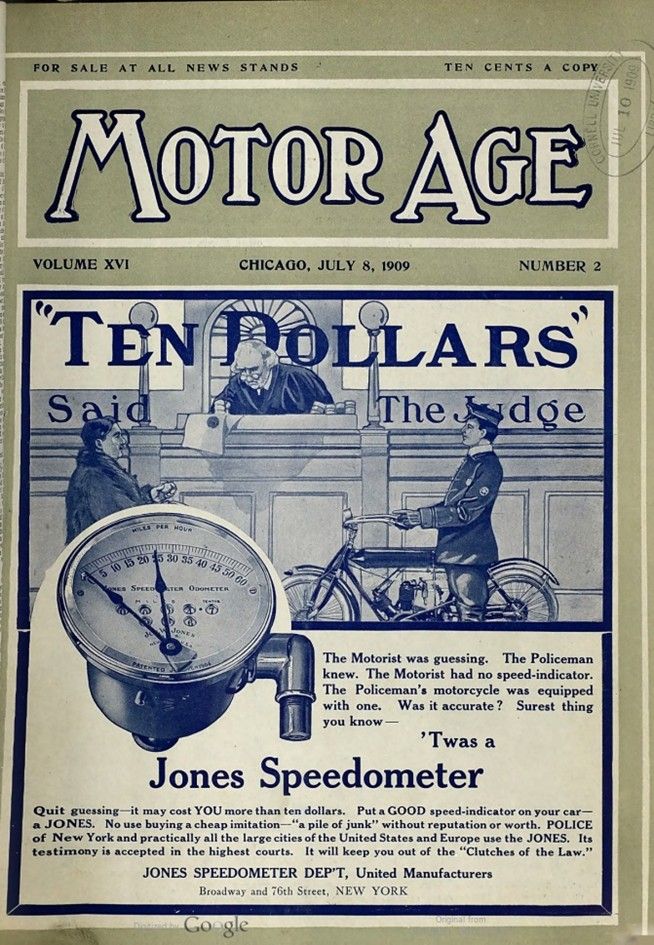
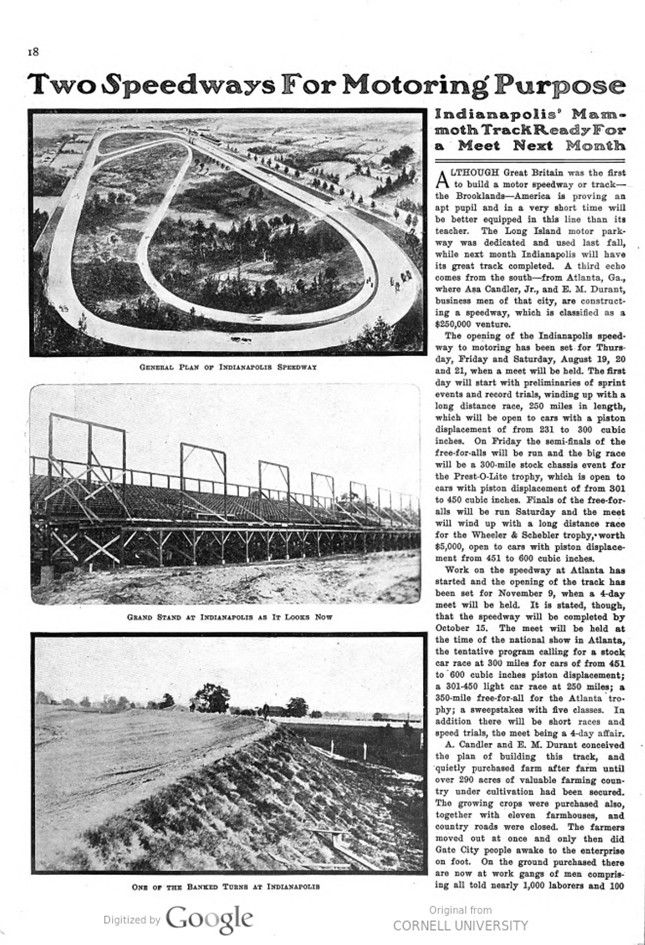

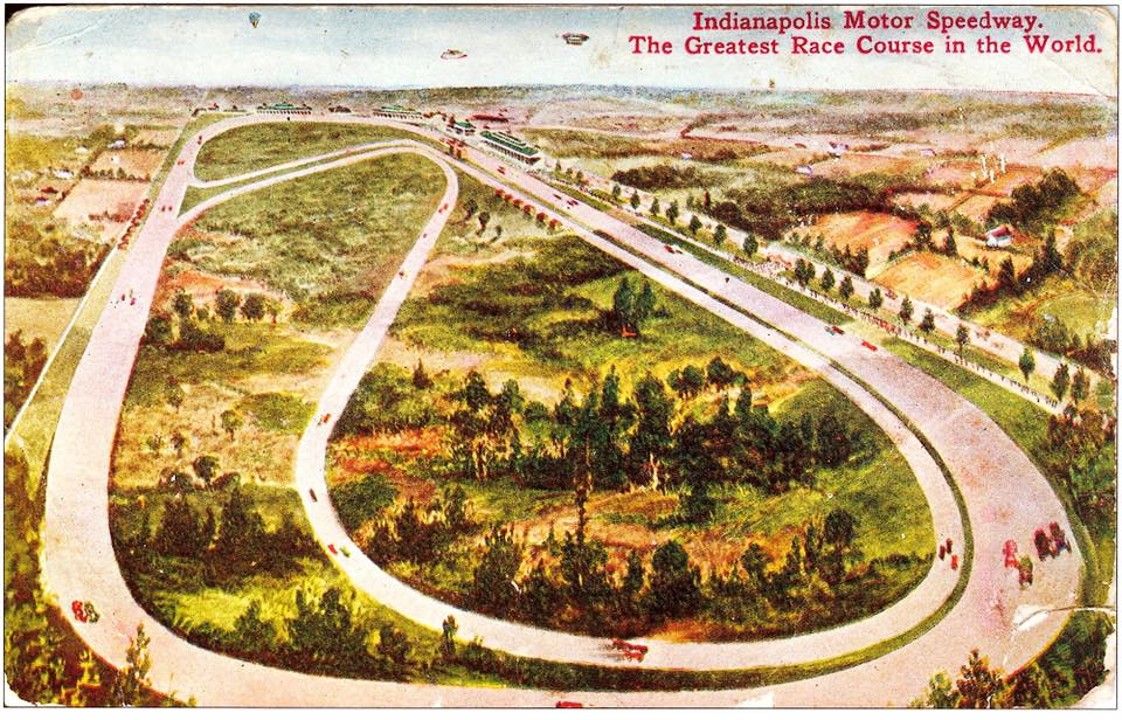
Text and jpegs by courtesy of hathitrust.org www.hathitrust.org, compiled by motorracinghistory.com
Motor Age Volume XVI, No. 2, July 8, 1909.
Two Speedways for Motoring Purpose Now Being Built in the United States
Indianapolis“ Mammoth Track Ready for a Meet Next Month
Patriotic Southerners Constructing Racing Plant at Atlanta, Ga.
ALTHOUGH Great Britain was the first to build a motor speedway or track – the Brooklands – America is proving an apt pupil and in a very short time will be better equipped in this line than its teacher. The Long Island motor parkway was dedicated and used last fall, while next month Indianapolis will have its great track completed. A third echo comes from the south f rom Atlanta, Ga., where Asa Candler, Jr., and E. M. Durant, business men of that city, are constructing a speedway, which is classified as a $250,000 venture.
The opening of the Indianapolis speedway to motoring has been set for Thursday, Friday and Saturday, August 19, 20 and 21, when a meet will be held. The first day will start with preliminaries of sprint events and record trials, winding up with a long distance race, 250 miles in length, which will be open to cars with a piston displacement of from 231 to 300 cubic inches. On Friday the semi-finals of the free-for-alls will be run and the big race will be a 300-mile stock chassis event for the Prest-O-Lite trophy, which is open to cars with piston displacement of from 301 to 450 cubic inches. Finals of the free-for-alls will be run Saturday and the meet will wind up with a long distance race for the Wheeler & Schebler trophy, worth $5,000, open to cars with piston displacement from 451 to 600 cubic inches.
Work on the speedway at Atlanta has started and the opening of the track has been set for November 9, when a 4-day meet will be held. It is stated, though, that the speedway will be completed by October 15. The meet will be held at the time of the national show in Atlanta, the tentative program calling for a stock car race at 300 miles for cars of from 451 to 600 cubic inches piston displacement; a 301-450 light car race at 250 miles; a 350-mile free-for-all for the Atlanta trophy; a sweepstakes with five classes. In addition there will be short races and speed trials, the meet being a 4-day affair.
A. Candler and E. M. Durant conceived the plan of building this track, and quietly purchased farm after farm until over 290 acres of valuable farming country under cultivation had been secured. The growing crops were purchased also, together with eleven farmhouses, and country roads were closed. The farmers moved out at once and only then did Gate City people awake to the enterprise on foot.
On the ground purchased there are now at work gangs of men comprising all told nearly 1,000 laborers and 100 teams. Great steam shovels, 100 big cars running on tracks, grubbers, carpenters and masons are at work.
The track or speedway is to be 2 miles in circumference, 100 feet in width on the home stretch and 60 feet, on the banks and back stretch. On the banks the rise will be 10 feet to the outer edge or six degrees and these banks will be shaped scientifically.
The surfacing on a red earth basis will be of Augusta dirt and well mixed with a special oil. The removal of 300,000 cubic yards of dirt will be required to construct the speedway and level down all the hills to bring into view of the stand every inch of the track, which at some points will be 15 feet above the surrounding land at the pole. At such points a bank will be built to the land below for safety and the backs of the banks will be slanting also. No fences inside or outside the track will also lend an air of safety. Eleven farm houses will be removed from the center to a low point in the land where will be erected the speedway village for the accommodation of the racing teams and managers. Twelve or more fireproof garages and a machine shop with power will be erected there. Each garage will accommodate four cars, two entering from the rear and two from the front. The living rooms of the drivers will be above the garages. In addition the manager will be provided with a home and office in the track center. At one corner of the speedway grounds will be found a club house and the next corner has a home for the track superintendent or ground keeper. There will be a complete waterworks also in operation on the ground and a lighting plant.
The tract of land is 2,200 by 6,100 feet and is but 7 miles from the city center, out both Stewart avenue and College avenue, each 80 feet in width. Two street car lines will enter the grounds, and two railroads are close by, the Atlanta and West Point and the Central of Georgia, with side tracks extending for several miles on each road. Grandstands to seat over 30,000 people are to be erected and at a height giving a general view of the entire course. Under these stands photographers will find quarters. A restaurant also will be found under the grandstand which will have a double row of boxes, 6 feet lower than the lowest seat. The press stand will be a model. Parking spaces for thousands of cars will be found in the center, which will be reached over a good road extending from the street under the upper bank and across the center.
Photo captions.
GENERAL PLAN OF INDIANAPOLIS SPEEDWAY – GRAND STAND AT INDIANAPOLIS AS IT LOOKS NOW – ONE OF THE BANKED TURNS AT INDIANAPOLIS
WORKMEN LAYING OUT ATLANTA SPEEDWAY – CANDLER AND DURANT, WHO ARE BUILDING ATLANTA TRACK – ACTIVITY AT ATLANTA – CUTTING OUT A TURN
